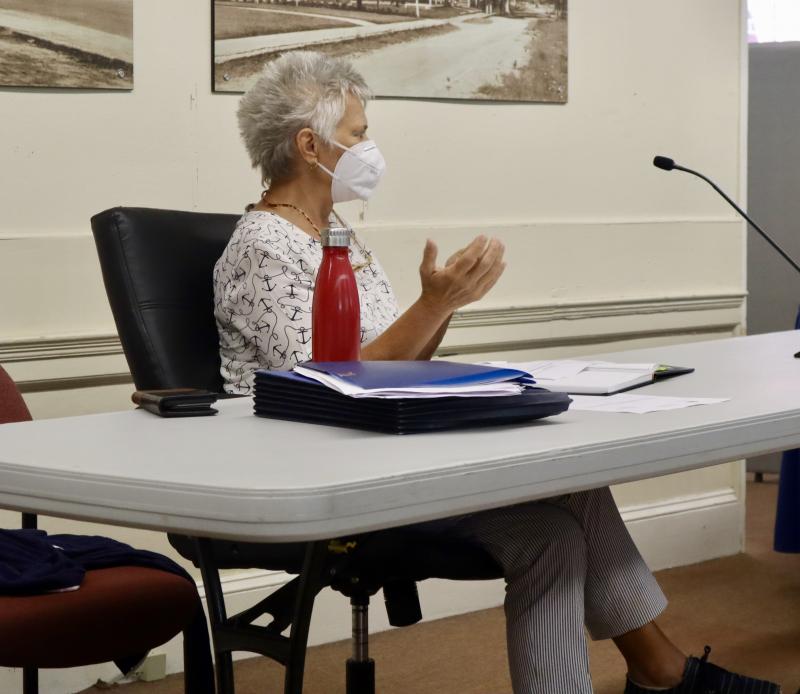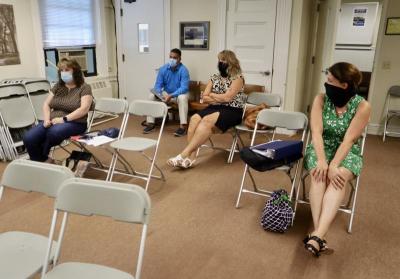Schools consider different approaches to return to class this fall
As schools in Massachusetts are scheduled to return to class this fall, educators and administrators in the Wareham Public School District have been working to figure out the best possible way to keep students and staff safe, healthy, and engaged during the next school year.
On July 15, Superintendent Dr. Kimberly Shaver-Hood and all four school principals held a workshop meeting with the Wareham School Committee to discuss the pros and cons of different approaches to reopening schools.
Shaver-Hood said that all schools must submit three potential plans to the Massachusetts Department of Secondary and Elementary Education by July 31. One plan will be for a full “face-to-face” reopening, another for a remote-learning-only approach, and the third for some type of hybrid approach.
Shaver-Hood and all four principals agreed that while they would like to return to 100% in person learning, that approach would be difficult due to the safety risks and financial implications.
Remote learning isn’t ideal either, so the hybrid approach is the most likely option at this point, but it’s not yet clear exactly how that would work.
A full return to in-person learning would be difficult to pull off because in order to comply with new state guidelines, Wareham Public Schools would have to hire new staff and drastically change class configurations and schedules.
Students would need to sit in desks at least three feet apart from each other, although a six foot distance is preferred when possible. In most cases, students would stay in the same class room for the whole day, and teachers would have to go from classroom to classroom in the middle and high school.
Schools will also need new desks to replace tables that don’t allow students to properly social distance and clear as much additional space in classrooms as possible.
As Wareham High School Principal Scott Palladino put it, schools will have to remove all “things that aren’t necessary for instruction that take up space” from classrooms and then store them elsewhere on campus.
Shaver-Hood explained that in order to keep class sizes small enough to maintain social distancing in classrooms in a full return to in-person learning, schools would have to hire dozens of new teachers.
Since sanitation is key to keeping everyone safe, schools would also need to buy PPE and hire new custodians.
All together the district would need to hire 158 new staff. The new staff, PPE, new desks, and other expenses associated with the fully in-person approach would cost the district over $8 million.
“Where we’re going to get that money is a wonderful question,” Shaver-Hood said, as it’s not clear where that funding could come from.
Remote learning has its challenges as well, especially for the youngest of students, according to Decas School Principal Bethany Chandler.
“It’s concerning because it requires parents to be onboard,” Chandler said.
She explained that for young children with parents at work during the day, remote learning can pose serious logistical challenges. Many would have to learn remotely while at a daycare, or under the supervision of an older sibling.
Across all age groups, Palladino said there needs to be a consistent way to hold students accountable for doing their online assignments, and that grading should be used rather than the “pass or incomplete” model that was used this spring.
The hybrid approach would alleviate most of the costs associated with the fully in-person approach. It could also lower the chance to spread the coronavirus with less crowded buildings while still allowing for some face to face instruction.
However, it wouldn’t solve all of the problems of the other two approaches, and it is still unclear how it would work logistically.
An obvious approach recommended by the state would be to separate the student populations into two groups which would alternate between in-person, and remote learning on a weekly basis.
Another approach would be to grant each group two days of in-person learning every week. One group would go to school in person on Monday and Tuesday, and the other on Thursday and Friday. Wednesday would be used for cleaning the school buildings. Students would learn from home on the other three days of the week when it is not their turn to go to school.
This approach seems to be the favorite so far in Wareham because many teachers feel that a week is too long to go without seeing a student in person.
How exactly students will learn remotely in the hybrid approach is still undecided. Some have suggested that they join class via zoom, others have considered recording lessons, or using videos or other methods of online instruction.
Palladino said he is considering having four core teachers handle all of the remote learning for high school students.
Regardless of how it's done, the principals admitted that the learning experience won’t be ideal next school year.
Since guidelines call for all students to spread out and face one direction, Chandler said younger students won’t get to play, learn to share, or enjoy “center based learning” around tables and rugs, which has been a mainstay in early education for years.
At the high school level, electives and extracurricular activities like sports are also likely to take a hit.
The workshop meetings with the school committee will continue for the next two Wednesdays, starting at 4:30 p.m. to continue planning for the return to school.
The committee will vote on a plan in the first week of August.
Officials are asking families to fill out a survey with their preferences and concerns by July 29. Click here to respond.














